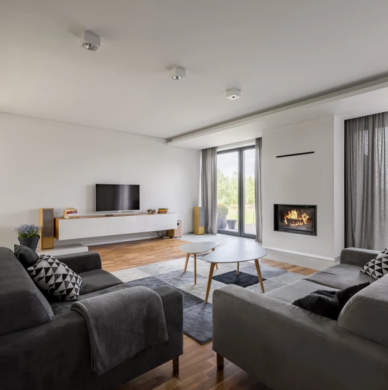6 important steps to take before buying lighting for your home

Is it time to choose lighting for your home and don't know where to start? You're in the right place! In today's article we are going to give you some important tips that you should consider when planning and choosing the perfect lighting for you.
These rhythms also tell our bodies to delay the release of hormones like melatonin. Melatonin is a hormone that helps induce the feeling of tiredness and promotes good quality sleep, which kicks in at the end of the day.
When it comes to lighting, it is not enough to select the most economical lamp or the piece that best fits your decor. Lighting has to be functional and adapt to the space in which it is inserted in the best way, in order to provide comfort and well-being to residents.
A iluminação é um fator indispensável para o ajudar a criar o ambiente da sua casa, mas com tantas opções disponíveis é fácil ficar rapidamente mais confuso do que esclarecido.
These rhythms also tell our bodies to delay the release of hormones like melatonin. Melatonin is a hormone that helps induce the feeling of tiredness and promotes good quality sleep, which kicks in at the end of the day.
When it comes to lighting, it is not enough to select the most economical lamp or the piece that best fits your decor. Lighting has to be functional and adapt to the space in which it is inserted in the best way, in order to provide comfort and well-being to residents.
A iluminação é um fator indispensável para o ajudar a criar o ambiente da sua casa, mas com tantas opções disponíveis é fácil ficar rapidamente mais confuso do que esclarecido.

Evaluate natural light
The first step in the lighting definition process should be to evaluate all the spaces in your home one by one. An initial factor to consider should be the amount and quality of natural light that each of your rooms receives during the day.
It is important to take into account the sun exposure of the house and each room, to better choose the positioning of the light points to be introduced.
In addition to a good sun exposure does not cancel out the need for artificial light, a house that has plenty of natural light allows you to direct the lighting to the places that are most used at night. Consequently, the use of more targeted lighting, and with fewer points of light, can result in energy savings.
Set the wall color
Rooms with lighter walls, such as white, ecru or beige, are naturally brighter as the light that falls on them reflects with greater intensity. That way, if your rooms are bright and bright, you won't need such strong or concentrated lighting.
On the other hand, if your rooms have strong or dark colors, the light will not reflect the same, making the room darker. In this case, you should plan the lighting points carefully, in order to create a well-lit and welcoming atmosphere.
This applies not only to the walls, but also to the rest of the room's decor, such as furniture, accessories and rugs.
Set the points of light
Now that you've evaluated the amount of natural light your home receives and defined the wall colors for your rooms, you can define the amount and arrangement of your light points. To do this, you should consider the difference between general and decorative lighting, in order to define the pieces you want to include in your lighting scheme.
General lighting must be highly functional, being associated with the day-to-day lighting of the inhabitants. So it is necessary that it has enough power to illuminate the rooms in their entirety. Normally this type of lighting is obtained through luminaires fixed to the ceiling.
Decorative lighting, on the other hand, aims to create environments and complement the existing decor. Its function is not exactly to illuminate the space, but to make it cozier. Due to this factor, a high power is not as important as in the case of functional light, as the light should be softer, only enhancing the surrounding decorative elements.
Choose the color of the lamps according to the room function
Probably the most important step when it comes to creating the different environments in your home, color temperature cannot be ignored.
Each room needs its own lighting, with different color temperatures and intensities, in order to create different environments suitable for everyday routines. Kitchen lighting should be quite different from bedroom lighting, just as living room lighting should be different from bathroom lighting.
For example, for relaxation or leisure rooms, such as living rooms and bedrooms, you can opt for lamps with more yellowish tones (3000k or 2700k), which provide comfort. With regard to work divisions, such as kitchens and offices, you can choose to equip them with lamps with whiter tones (4000k or 5000k), which help with concentration.
Of course, these are just recommendations, and the customer should choose the option that best suits their personal taste.
Consider energy efficiency
In addition to the color of the lamps, their energy efficiency is also an indispensable factor when choosing the right lamps for your home.
More and more fluorescent and incandescent lamps are a thing of the past and when it comes to savings, there is no better option than LED lamps. With low consumption, high performance and longer durability, LED lamps are the most efficient option to equip your home.
In addition to the initial cost being higher when compared to incandescent bulbs, the investment will certainly pay off in the long run.
Request a lighting study
If even with all these tips you still have doubts, or if you simply prefer to have an opinion or professional help, then you can resort to a lighting study.
The lighting study is a service in which a set of techniques are applied to calculate the levels of artificial light needed for an environment. This study can help you better plan your space and the arrangement of lighting points, but it can also help you save money, by eliminating waste of light or areas with excessively aggressive light.
The result will be more fluid and balanced lighting, which will provide you with greater comfort and well-being.
Tromilux provides the service of elaboration of lighting studies to its customers.
The first step in the lighting definition process should be to evaluate all the spaces in your home one by one. An initial factor to consider should be the amount and quality of natural light that each of your rooms receives during the day.
It is important to take into account the sun exposure of the house and each room, to better choose the positioning of the light points to be introduced.
In addition to a good sun exposure does not cancel out the need for artificial light, a house that has plenty of natural light allows you to direct the lighting to the places that are most used at night. Consequently, the use of more targeted lighting, and with fewer points of light, can result in energy savings.
Set the wall color
Rooms with lighter walls, such as white, ecru or beige, are naturally brighter as the light that falls on them reflects with greater intensity. That way, if your rooms are bright and bright, you won't need such strong or concentrated lighting.
On the other hand, if your rooms have strong or dark colors, the light will not reflect the same, making the room darker. In this case, you should plan the lighting points carefully, in order to create a well-lit and welcoming atmosphere.
This applies not only to the walls, but also to the rest of the room's decor, such as furniture, accessories and rugs.
Set the points of light
Now that you've evaluated the amount of natural light your home receives and defined the wall colors for your rooms, you can define the amount and arrangement of your light points. To do this, you should consider the difference between general and decorative lighting, in order to define the pieces you want to include in your lighting scheme.
General lighting must be highly functional, being associated with the day-to-day lighting of the inhabitants. So it is necessary that it has enough power to illuminate the rooms in their entirety. Normally this type of lighting is obtained through luminaires fixed to the ceiling.
Decorative lighting, on the other hand, aims to create environments and complement the existing decor. Its function is not exactly to illuminate the space, but to make it cozier. Due to this factor, a high power is not as important as in the case of functional light, as the light should be softer, only enhancing the surrounding decorative elements.
Choose the color of the lamps according to the room function
Probably the most important step when it comes to creating the different environments in your home, color temperature cannot be ignored.
Each room needs its own lighting, with different color temperatures and intensities, in order to create different environments suitable for everyday routines. Kitchen lighting should be quite different from bedroom lighting, just as living room lighting should be different from bathroom lighting.
For example, for relaxation or leisure rooms, such as living rooms and bedrooms, you can opt for lamps with more yellowish tones (3000k or 2700k), which provide comfort. With regard to work divisions, such as kitchens and offices, you can choose to equip them with lamps with whiter tones (4000k or 5000k), which help with concentration.
Of course, these are just recommendations, and the customer should choose the option that best suits their personal taste.
Consider energy efficiency
In addition to the color of the lamps, their energy efficiency is also an indispensable factor when choosing the right lamps for your home.
More and more fluorescent and incandescent lamps are a thing of the past and when it comes to savings, there is no better option than LED lamps. With low consumption, high performance and longer durability, LED lamps are the most efficient option to equip your home.
In addition to the initial cost being higher when compared to incandescent bulbs, the investment will certainly pay off in the long run.
Request a lighting study
If even with all these tips you still have doubts, or if you simply prefer to have an opinion or professional help, then you can resort to a lighting study.
The lighting study is a service in which a set of techniques are applied to calculate the levels of artificial light needed for an environment. This study can help you better plan your space and the arrangement of lighting points, but it can also help you save money, by eliminating waste of light or areas with excessively aggressive light.
The result will be more fluid and balanced lighting, which will provide you with greater comfort and well-being.
Tromilux provides the service of elaboration of lighting studies to its customers.

The lighting in our home is essential for our well-being, good mood and plays an indispensable role in our daily routine. That's why it's so important to know exactly what factors to consider before proceeding with the purchase of your lighting pieces.
We hope that this article has helped to clarify your doubts around this topic.
We hope that this article has helped to clarify your doubts around this topic.